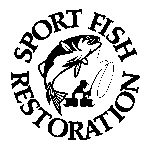Hatcheries and Stocking
Hatcheries
Elmendorf State Fish Hatchery
Closed in the Spring of 2011 and replaced by the new William Jack Hernandez Sport Fish Hatchery
Elmendorf State Hatchery was located in Anchorage on the north bank of Ship Creek near the intersection of Reeve Boulevard and Post Road. The hatchery was owned and operated by the State of Alaska, Department of Fish and Game, Sport Fish Division and produces Chinook salmon (kings), and rainbow trout for southcentral and interior Alaska sport fisheries.
History:
The hatchery started in 1965 with three small circular wooden ponds. The present facility was built in 1976 and has 21; 10' X 60' concrete or aluminum rearing ponds called raceways.
Chinook:
Adult Chinook salmon from Ship Creek were captured, held in the hatchery, then spawned each July. Other Chinook salmon eggs were brought from Crooked Creek, Ninilchik River and Deception Creek. The eggs were held in incubators from July through October, then fry transferred to raceways and reared until the smolt stage. Smolt are fish that are ready for ocean migration. In May and June, the smolt were released at selected stocking locations. The smolt imprint (remember the smell of the waters) on their way to the ocean. They spend two to five years in the ocean before returning to those sites as adult salmon.
Rainbow Trout:
Rainbow trout of Swanson River origin are used for lake stocking programs. Fort Richardson Hatchery maintains a captive broodstock that is spawned each spring. In the fall, some of the rainbow trout fingerlings were transferred from Fort Richardson Hatchery to Elmendorf Hatchery for rearing. Rainbow trout are stocked in southcentral and interior Alaskan lakes in the spring when trout are eight to ten inches long (1/4 to 1/3 pound).
Funding:

This Elemendorf hatchery was 100% funded through user fees: 75% coming from the Federal Aid to Sport Fish Restoration, Dingell-Johnson / Wallop-Breaux program. This program provides funds from federal excise taxes collected on sport fishing tackle, recreational boats and gasoline used in recreational boats. The other 25% of funding came from state sport fishing license sales.
